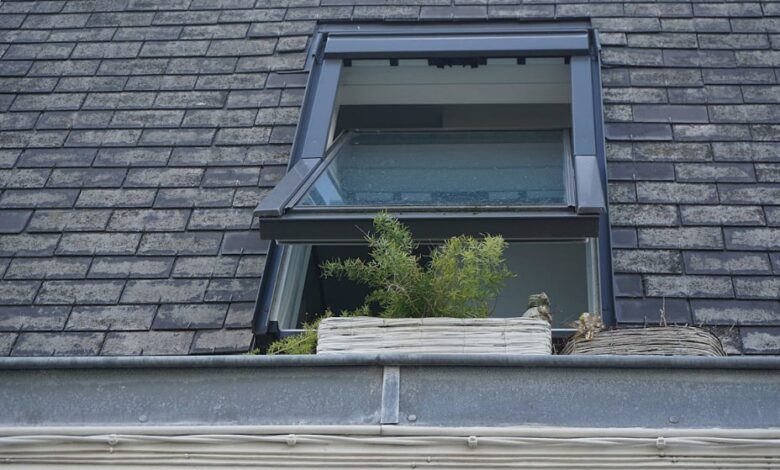9 Signs You Need to Replace Your Roof

Living in Pittsburgh means experiencing a wide range of weather conditions throughout the year. From heavy snowfalls in winter to spring rains and the occasional summer storm, your home’s roof is constantly put to the test. As a homeowner in Pittsburgh, it’s important to know when your roof might be reaching the end of its lifespan. Ignoring the signs of a deteriorating roof can lead to costly repairs and even more significant damage to your home’s structure. Here are the telltale signs that it’s time to replace your roof, ensuring that your home remains safe and sound.
Leaks and Water Damage
Water damage is a serious concern for any homeowner. In Pittsburgh, where heavy rains are common, it’s essential to address leaks as soon as they are detected. Check your attic for any signs of moisture or water damage. If you find any damp areas or mold, it’s crucial to have your roof inspected and possibly replaced to prevent further damage.
Shingle Damage
Take a close look at your shingles. If you notice cracked, curled, or missing shingles, know that your roof is in trouble. Shingles are designed to protect your roof from the elements, and any damage to them can compromise the entire roofing system. Pittsburgh’s weather, with its heavy snowfalls and frequent rain, can accelerate shingle deterioration. Damaged shingles can lead to leaks and water damage inside your home. If you see patches where shingles are missing or find pieces of shingles in your yard, it’s time to hire a local Pittsburgh roof replacement company for an exceptional job.
Granule Loss
Granules on shingles play a vital role in protecting your roof from the sun’s harmful UV rays. Over time, these granules can wear away, especially with Pittsburgh’s diverse weather conditions. To check for granule loss, look at your gutters and the ground around your home. If you notice an accumulation of granules, it’s a sign that your shingles are wearing out. Granule loss can also make shingles less effective at protecting your roof, leading to faster deterioration. If granule loss is extensive, it’s a good indication that you need a new roof.
Sagging Roof Deck
A sagging roof deck is a clear sign that something is seriously wrong with your roof. This problem can be caused by prolonged exposure to moisture, which weakens the structural integrity of the roof. If you notice any sagging or uneven areas on your roof, it’s essential to have it inspected by a professional. Ignoring this issue can lead to more severe damage and even roof collapse. The weight of heavy snowfalls in Pittsburgh can exacerbate a sagging roof, making it a critical issue to address promptly.
Moss and Algae Growth
While moss and algae might seem like minor cosmetic issues, they can actually cause significant damage to your roof. Moss retains moisture, which can lead to the deterioration of roofing materials. In Pittsburgh’s humid climate, moss and algae growth are common problems. When moss grows between shingles, it can lift them, allowing water to seep underneath and cause leaks. Algae, on the other hand, can create black streaks on your roof, which not only look unsightly but can also degrade the shingles over time. Regular cleaning can help, but if moss and algae are persistent, it might be a sign that your roof needs replacing.
Higher Energy Bills
If you’ve noticed a sudden spike in your energy bills, your roof could be to blame. A damaged or aging roof can lose its ability to insulate your home effectively, leading to higher heating and cooling costs. In Pittsburgh, where winters can be particularly cold, a well-insulated roof is crucial for maintaining energy efficiency. Check your attic insulation and look for any signs of damage or moisture. If your roof isn’t keeping your home as warm in the winter or as cool in the summer as it used to, it’s a strong indication that a replacement might be necessary.
Storm Damage
Pittsburgh experiences its fair share of severe weather, from heavy snowstorms to intense summer thunderstorms. After any significant weather event, it’s essential to inspect your roof for damage. High winds can lift and tear shingles, while hail can cause dents and cracks. Even if the damage isn’t immediately apparent, small issues can worsen over time. After a storm, look for any visible damage from the ground, and if safe, use a ladder to get a closer look. If you’re unsure, it’s always a good idea to have a professional roofer conduct an inspection. Frequent or severe storm damage often means it’s time for a new roof.
Read also: Nycbased Proof Rpg Pirate Nation December
Roofing Material Deterioration
Different roofing materials show their age in different ways. For example, asphalt shingles might become brittle and crack, while wooden shingles can rot and warp. Metal roofs might rust or develop corrosion spots. No matter the material, signs of deterioration mean your roof is no longer providing the protection your home needs. In Pittsburgh, where weather conditions can be harsh, keeping an eye on the specific signs of wear and tear for your roofing material is crucial. Regular maintenance can extend the life of your roof, but significant deterioration usually indicates that a replacement is necessary.
Conclusion
Recognizing the signs that indicate it’s time to replace your roof is crucial for maintaining the safety and integrity of your home. For Pittsburgh homeowners, this means paying close attention to the age of the roof, shingle damage, granule loss, leaks, sagging roof decks, daylight through the roof boards, moss and algae growth, higher energy bills, storm damage, and general roofing material deterioration. By staying vigilant and addressing these issues promptly, you can prevent minor problems from becoming major headaches. Regular roof inspections and maintenance are key to prolonging the life of your roof, but when the time comes for a replacement, investing in a new roof will ensure your home remains protected against Pittsburgh’s diverse weather conditions. Consult with a professional roofing contractor to get an accurate assessment and make informed decisions about your roof’s health.




